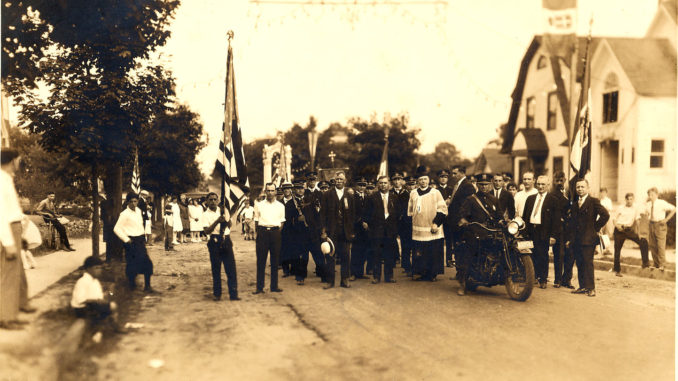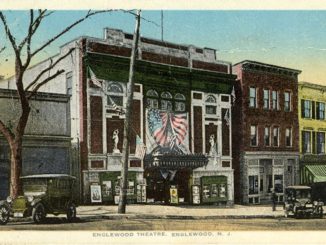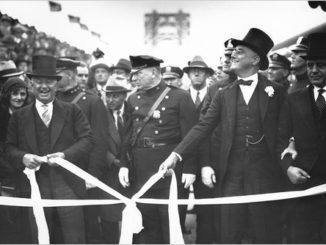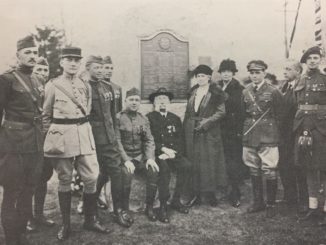
EMERSON, N.J.—When Southern Italians settled in Emerson during the early 20th century, many of their old world customs followed. Not the least of these were Catholic traditions, including the veneration of saints. Pictured here, the people of Emerson celebrate the Feast of Saint Rocco in the early 1920s.
The most honored saint among the people of the Basilicata region of southern Italy was Rocco, a French Franciscan monk who lived during the 14th century.
The Black Death first hit Italy in 1348, and legend has it that Rocco traveled the country tending to the many who were stricken by the plague. It is said that his power was able to cure the sick, and that many recovered from the disease after he made the sign of the cross over their bodies. According to the story, Rocco was miraculously marked with a cross-shaped birthmark on his chest.
The Feast of Saint Rocco is traditionally celebrated annually on the date of the saint’s death, which is believed to have been Aug. 16, 1378.
According to the book “Emerson: From Basilicata to Etna,” a history of Emerson’s Italian families written by borough native Dwight DeStefan (now a River Vale resident), a man named Biagio Micucci, who had come from the city of Spinoso in Basilicata, Italy, is credited with bringing the Feast of Saint Rocco to Emerson.
Micucci reportedly prayed to Rocco after falling ill around 1907, vowing that if he recovered he would organize a festival in his hometown to honor the saint. Fortunately, Micucci did indeed recover—and he ended up living until 1951. He also kept his word, and the first townwide celebration in honor of Saint Rocco took place in Emerson around 1909.
Starting in the early evening on Aug. 15, crowds would flock to the focal point of the festivities—between the old firehouse (now the location of the borough hall) and a Catholic church on Linwood Avenue which had a shrine to Saint Rocco. There would be food stands, a bonfire, fireworks, and a brass band playing both modern and traditional Italian music. Linwood Avenue would be draped with strands of lights in addition to both Italian and American flags.
On Aug. 16, the celebration would continue with a parade. Starting at the firehouse, the procession would march west up Linwood Avenue, past the church, across Kinderkamack Road, continue up Linwood to Hasbrouck Avenue, then move south down to Ackerman Avenue. The procession then moved to the Block House (Emerson Hotel), down Palisade Avenue and ended up back at the firehouse.
“Devout men from Emerson were honored to be selected to carry the Saint’s statue, which would be surrounded on either side by both the Italian tri-color flag and the American ‘Stars and Stripes,’” writes DeStefan of the marchers. “Some of the old-timers from Basilicata would carry small wax figures during the parade. These figures represented their body parts, which were afflicted with pain or illnesses, and the waxen images were deposited at the saint’s shrine at the end of the parade in hopes that St. Rocco might bring them relief and improved health.”
Celebration of the Feast of Saint Rocco continued in Emerson until the 1930s.
DeStefan writes that when Father Palisi passed away during that decade, the tradition entered a steady decline.



